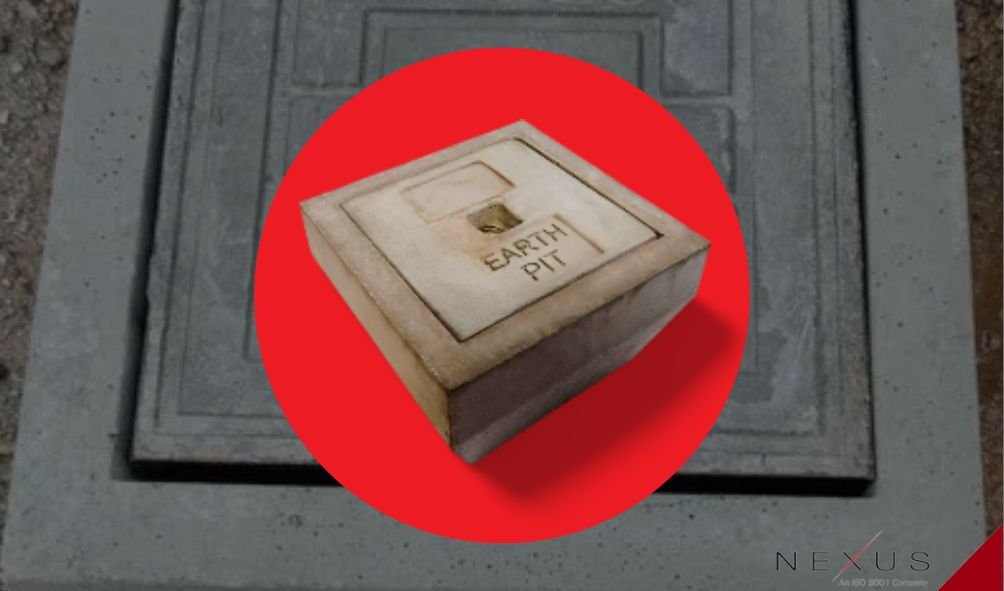What is an Earth Pit?
An Concrete Earth Pit is a structure used in an earthing system to provide access to earth conductors and other parts of the earthing system for repair and inspection. It is a form of an underground box typically fabricated from reinforced Concrete and set up where the earthing system is located.
Concrete soil pits reach earth electrodes and other earthing system parts like ground plates, poles, etc. It is typically equipped with a cover that can be removed, providing access to the chamber's internal components. A conductor like a strip, wire, or cable typically connects an earth pit to the earthing system. An earth pit generally is positioned close to earth electrodes. For examination, testing, or maintenance, it offers a method of access to the earthing system that is practical and risk-free.
What Are the Applications of Earth pit chambers?
» Examination: A valuable and risk-free way to reach earth conductors and other parts of the earthing system is through an earth hole. It enables the features to be inspected for wear and tear, corrosion, or other issues. The earthing system's efficacy and safety must be guaranteed, and any possible issues must be found and fixed.
» Evaluation: The test of earthing systems can be carried out in an earth hole, and examples of these tests include continuity tests and resistance tests. These checks can determine any issues requiring further investigation and help ensure the earthing system operates correctly.
» Supervision: An earth trench makes it simpler to conduct upkeep procedures like cleansing or irrigation details to maintain the necessary resistance by providing access to the earth wires and other parts of the earthing system. an earth pit is an essential component of any earthing system. It helps to ensure that the earthing system continues to function effectively and extends the system's life span at the same time.

How to Install an Earth pit chamber?
- Use a shovel or some other excavation instrument to create a hole where the earthing system will be installed. The earth pit will be installed below ground, and the space excavated to make room for it will be large enough to accommodate the underground cavity.
- The earth electrodes and conductors must be installed in the space that has been excavated following the design of the earth system to improve earth contact and lower earth resistance. Galvanized iron plates are recommended with measurements of 500 millimeters by 500 millimeters by 10 millimeters (or more).
- Use a conductive substance such as sand or gravel to fill the hole surrounding the earth electrode. This substance offers a low impedance link to the earth, assisting in correctly grounding the earth's spot. Compounds that improve the earth's surface can be used to meet enhanced resistance requirements.
- At this point, place the earth pit inside the opening and check to see that it is stable and level. The earth pit must be made of reinforced Concrete to be robust and long-lasting.
- Connecting the earth hole and the earthing device requires a connector, such as a wire or a cable, to combine the two. This conductor serves as the grounding connection for the earthing system, enables access to the earth hole, and facilitates maintenance.
What are the safety steps for Earth Pit Chambers?
- It is crucial to perform routine checks on the earth pit.
- Ensure high resistance by taking the necessary preventative measures.
- Keep the electrical and instrumentation channels separate from one another.
- Establish earth-neutral holes in separate locations.
- A separate earthing system must be maintained to protect a high mast or structure from lightning.
- In earthing, ensure that the strip-earthing thickness is maintained.

 "Government Recognised Star Export House"
"Government Recognised Star Export House"



